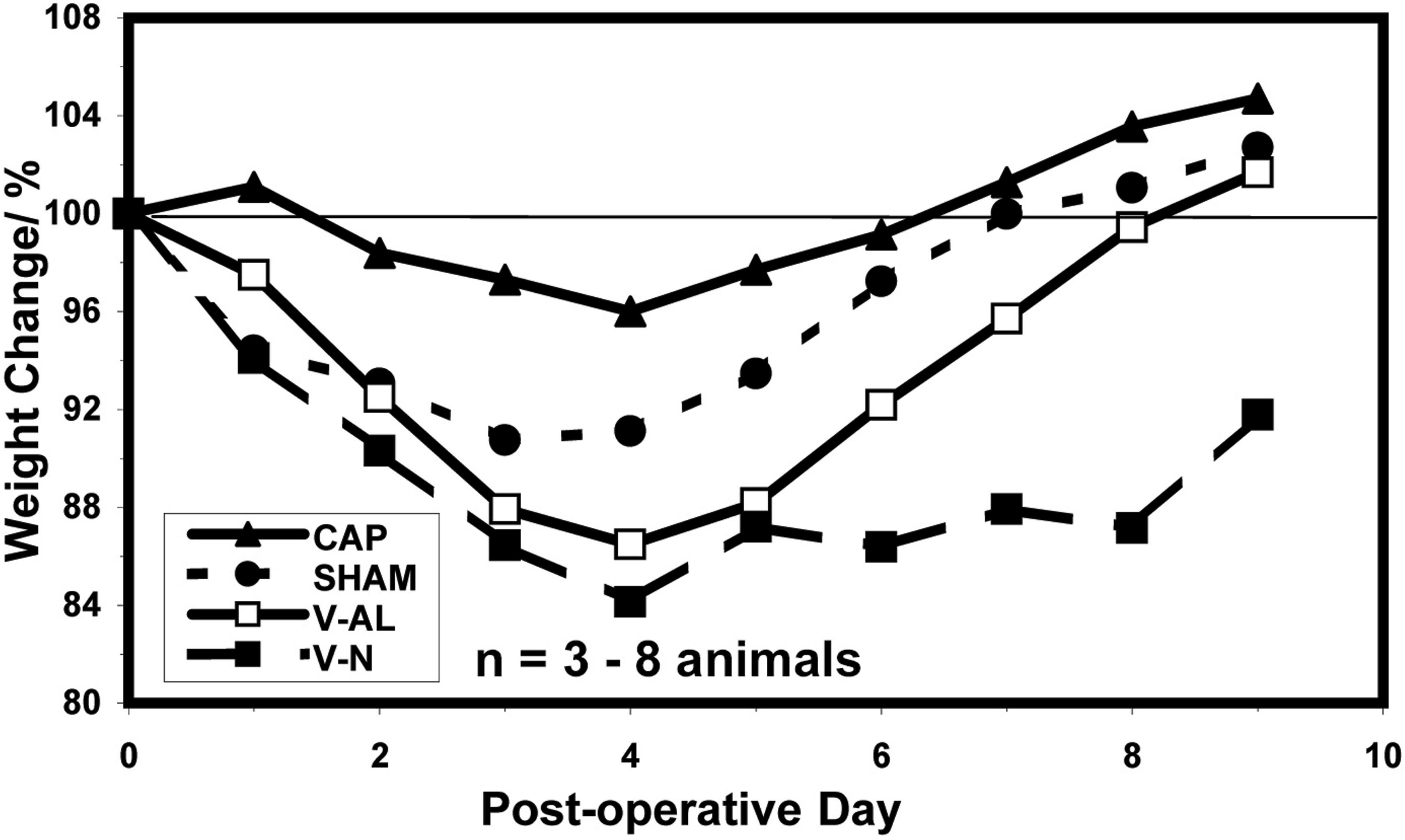Introduction: The vagus plays a major role in regulation of nutrient transport and weight loss is known to occur after vagotomy. We examined the influence of total and selective vagal ablation on feeding patterns and weight control in rats.
Methods: Rats, acclimatized to a 12-hour photoperiod, were subjected to total subdiaphragmatic vagotomy, vagal afferent ablation with capsaicin or sham via midline laparotomy. Vagotomized rats were further divided into groups provided food ad lib(V-AL) or free feeding only at night (V-N). Sham rats were pairfed to vagotomized rats or received free feeding at night only. Deafferented animals received restricted feeding at night.
Results: Vagotomized animals ate continuously, with 41% of the mean food intake during daylight hours. Pairfed shams ate predominantly at night (93% of intake, p<0.05 after day 2). There was no difference in total food intake between V-AL and V-N, but restricted feed animals had lower body weights during the study and failed to return to their pre-operative weight (Figure 1).
Conclusions: Vagotomy disrupts normal nocturnal feeding patterns of rats. Restricted night feeding compromises weight gain compared to sham and deafferented rats. This demonstrates the role of vagal efferents in weight control.
Figure 1. Graph plotting post-operative weight after surgery
 500 Cummings Center
500 Cummings Center +1 978-927-8330
+1 978-927-8330
 +1 978-524-0461
+1 978-524-0461